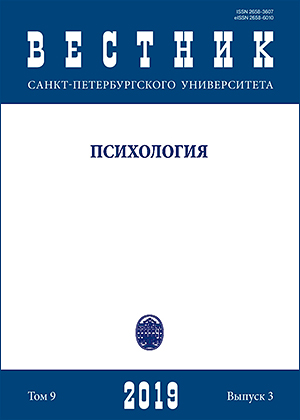The mechanisms of categorical influences on visual search
DOI:
https://doi.org/10.21638/spbu16.2019.305Abstract
In order to compare the mechanisms of such influences, described in modern paradigms, weuse two parameters: the accessibility of categorical information and the form of its representation.The parameter of accessibility concerns the temporal aspect: on which stage of a searchtask the participants have access to the categorical information. This information could beavailable during a search task or before it during the target presentation stage. The secondparameter is a form of representation of categorical information. It could be represented directlyas categorical knowledge, or indirectly by an object’s visual features. Our analysis showsthe following: If categorical information is available only at the target demonstration stageand represented indirectly by visual features, then it influences visual search by recalling aprototype of a target category, the visual features of which then form a search template. If acategory of a scene is also available, then it helps to choose the most relevant zones in a scenefor search. Additional information of distractors’ categories will draw participants’ attentionto the objects which are categorically similar to a target. Finally, if categorical information isavailable directly during the search stage, it influences our attention more than visual features.Therefore, we conclude that the mechanism of categorical influences on visual search dependson the amount of categorical information available to a participant. The more categoricalinformation of objects and a scene is available to participants, the more it influences visualsearch performance
Keywords:
Visual Search, Categories, Attention, Top-Down Processes, Bottom-Up Processes
Downloads
References
References
Frontiers in Psychology, 2012, vol. 3, pp. 1–13.
Downloads
Published
How to Cite
Issue
Section
License
Articles of "Vestnik of Saint Petersburg University. Psychology" are open access distributed under the terms of the License Agreement with Saint Petersburg State University, which permits to the authors unrestricted distribution and self-archiving free of charge.




